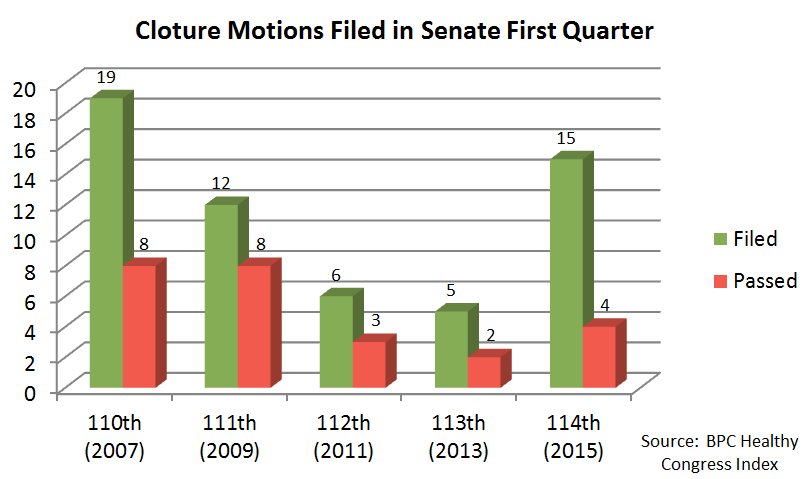'Healthy Congress Index' Shows Faint Signs of Life on Capitol Hill

“After a long and dreary winter, the streets of Washington are once again in bloom. While the most vibrant displays of color and renewal can be found around the monuments and Tidal Basin, spring has also brought some surprising flourishes of possibility to Congress.” - Jason Grumet, President of the Bipartisan Policy Center (BPC)
Grumet and the BPC are respected on both sides of the partisan aisle for their innovative approaches and efforts to reduce divisiveness and improve government effectiveness.
With congressional approval ratings at historic lows, any indication of a positive trend is welcome.
Even Fox News seems willing to concede that the concept of a functional Congress may have merit. AsChris Stirewalt of Fox recently wrote: “After a decade of intensifying dysfunction, even basic operation would be welcome to most voters. That would likely help the ratings of both parties.”
Are there really new signs of life on Capitol Hill? The BPC hopes to finally provide some hard data to support movement in the right direction.
The BPC just launched what it calls the Healthy Congress Index, providing basic vital signs of a functioning Congress, and the early results are encouraging.
On April 21, BPC Commission on Political Reform co-chairs Olympia Snowe and Tom Daschle (both former U.S. senators), former U.S. Secretary of Agriculture Dan Glickman, and John Fortier, director of BPC's Democracy Project, led a press briefing about the Healthy Congress Index:
“The criteria are based on recommendations released in June 2014 by BPC’s Commission on Political Reform, which was created to investigate the causes and consequences of America’s partisan political divide and present a plan to reinvigorate a political process that can work during a time of hyper-polarized politics.”
The index includes tangible, objective measures such as the number of days Congress spent in session, Senate openness to debate and amendments, and how effectively Congress followed practices designed to resolve differences.
One of the recommendations of the BPC’s Commission on Political Reform is that Congress be in session 5 days a week for 3 straight weeks in each 4-week period. The practice would translate to roughly 45-50 working days per quarter.
After a declining trend seen in recent Congresses, the first three months of 2015 show an uptick in working days, though still below the BPC goal.
Another measure, the number of cloture motions filed, provides insight about how the Senate debates legislation.
Cloture, the procedural action to end debate on a Senate matter, is used primarily by the majority party to end a minority filibuster. It can also be employed to move on any matter quickly, blocking debate by the minority party.
High levels of cloture votes are indicative of increased divisiveness and dysfunction in the Senate. Cloture, on the decline since 2011, turned sharply upward in early 2015 -- not a good sign.
A third measure, looking at the number and relative balance of amendments considered by both majority and minority parties, is a sign of desirable function. The BPC recommends a process allowing consideration of an equal number of amendments offered by senators of both parties.
"Amendments are bridge builders,” said former U.S. Senator Olympia Snowe. “They give both sides a chance to work together and compromise."
After declining for several years, the number of amendments considered in the Senate during the first quarter has increased in the last two Congresses. The gap between majority and minority party amendments is also closing, showing a further indication of health.
While the BPC admits that three months of data is not enough to draw far-reaching conclusions, there are encouraging signs reflected in the Healthy Congress Index. But "we're not quite ready to remove the patient from intensive care," commented Snowe during the press briefing.
Glickman added that with the upcoming presidential election, campaigns can focus on the metrics to show how government can work better in response to pressure from the public.
Clearly there is room for improvement, and it will be interesting to correlate the BPC's results with future congressional approval ratings. As the BPC releases additional results over time, we can hope for an increasingly brighter picture. At least we will have a more objective view of congressional health.
Photo Credit: M Dogan / shutterstock.com






